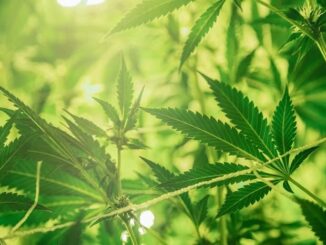
Acid form of CBG and the origin of the main cannabinoids,cannabigerolic acid (CBGA) is still relatively unknown. Late discovered, difficult to isolate and therefore study, it nevertheless has interesting properties and potential health benefits. cbdstoreindia.i dissects for you what is CBGAwhat we know about him and the gray areas to explore to better understand him effects on the body.
CBGA (cannabigerolic acid): simple definition

CBGA is a cannabinoid produced in the trichomes of hemp flowers
The CBGA is a cannabinoid, along with the very popular CBD and most criticized THC. However, it is much less present in the cannabis plant, especially becauseit converts more or less quickly into other cannabinoids.
Two aspects related to CBGA are particularly interesting:
- CBGA is often referred to as ” parent cannabinoid“. Understand, it is the origin of other cannabinoids and plays a direct role in their biosynthesis. In other words, without CBGA, CBD, THC, CBC and obviously the CBG, it would not exist.
- The CBGA has interesting properties in the raw state. In addition to its active role in the emergence of other cannabinoids, it has its own effects, which we will discuss in more detail in a moment.
Where does CBGA come from and what role does it play?
CBGA, like other cannabinoids, is produced by the trichomes of hemp. These are small sticky and almost transparent localized vesicles at flower level and of which the CBD resin. The main role of the CBGA is to protect the plant. So it is able to cause necrosis of certain cells to control the cutting of leaves and thus concentrate available energy at flower level. CBGA is therefore a natural regulator contribute directly to the proper development of a plant and the survival of its variety.
To go into a little more detail, it is useful to explain that, through a series of chemical reactions, cannabis is capable of producing all sorts of molecules useful for its development at different points in its evolution.
- First the trichomes produceolive oil such as geranyl pyrophosphate.
- These molecules are gradually converted into cannabigerolic acid (the CBGA that interests us here).
- In contact with the various enzymes present in the plant, the CBGA is in turn converted into THCA into CBDA and into CBCA the acidic forms that yield THC, CBD and CBC once each are decarboxylated (naturally or by human action).
- More rarely, natural decarboxylation takes place a little earlier and the CBGA then becomes CBG directly. This phenomenon partly explains the lower presence of CBG in the different cannabis strains as CBD or THC.
All right, but what’s the difference between CBG and its acidic form, CBGA?
CBGA vs CBG: Differences and Similarities

CBGA is just one step in the evolution of cannabis
| CBGA | CBG | |
| chemical formula | C22H32O4 | C21H32O2 |
| Or ? | In raw plant material | In decarboxylated plant material (by UV rays or by artificial heating) |
| discovery | 1996 by Japanese researchers | 1964 by Israeli researchers |
| effects on humans | Yes, through the endocannabinoid system (SEC) | Yes, through the SEC |
| Psychotropic effect (“makes you high”) | no | no |
CBGA is the precursor to CBG. So the latter is a Advanced form of CBGA, a later stage. In addition to this temporal difference, there is above all a molecular difference. If you remembered a few chemistry lessons, you might have noticed that the difference between the two molecules is one carbon atom (C) and two oxygen atoms (O), which is CO2 (carbon dioxide). This is enough to give you a little better understanding of the somewhat barbaric notion of decarboxylation.
This molecular difference has implications for the role of CBGA in the cannabis plant, but also, and this interests us particularly, at its level Ability to interact with receptors in our body. To put it simply, although close, CBGA and CBG have not not necessarily the same effects.
Effects of CBGA

CBGA would have an effect on metabolism
The scientific literature on the effects of CBGA is still very thin. If only because cannabigerolic acid was discovered relatively late compared to the main cannabinoids, then because it is very difficult to isolate. In fact, it changes rapidly, and in order to study it, not only is it impossible to heat the plant, but it must also be at a relatively early (pre-flowering) stage.
Nonetheless, some interesting avenues are explored, each of which requires careful and thorough consideration before any definitive conclusions can be drawn.
An effect on metabolism
The corresponding 2019 study showed that CBGA, like CBG and CBDA, can interact with PPAR sensors that are capable of doing so modulate fat metabolism. If these sensors are not working properly, the risk of developing diseases such as diabetes or high triglycerides and cholesterol levels increases.
colon cancer
According to another study, CBGA may play a role in the fight against colon cancer. It doesn’t just seem slow down the proliferation of cancer cellsbut it could also hasten their death.
diabetes and cardiovascular disease
As a direct result of CBGA’s effect on metabolism, it could be particularly useful against diabetes by preventing the production of the enzyme that causes oxidative stress and thus prevents the occurrence of certain complications. Limiting oxidative stress also makes it possible to avoid certain ones Cardiovascular problemswhich also represent a search path.
These first studies have not yet been conducted made only on models and/or during in vitro (laboratory) manipulation. So it remains to expand and deepen them and, if necessary, to carry out studies on humans.
